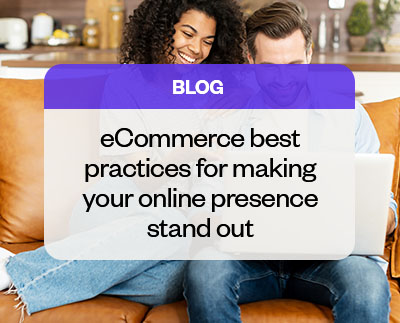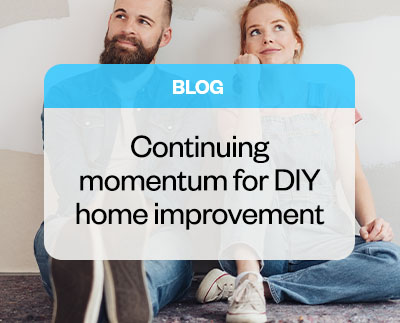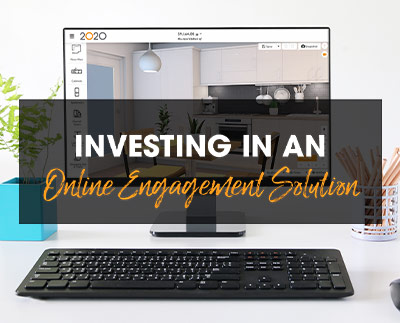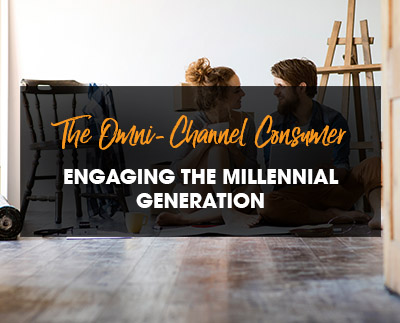
Even before shopping patterns shifted at the start of the pandemic, consumers had gotten used to the process of “testing out” designs and furnishings before making a final review and purchase. Seeing what options are available even before entering a store is considered just a part of the regular buying process now. That means, if you’re a retailer, designer or manufacturer, you need to follow ecommerce best practices and deliver your customers an online experience that lets them see what their choices are. Because if you don’t, your competitor is only a click away.
Research has shown that ecommerce grew during the pandemic to a total of nearly $800 billion. In fact, industry researcher Emarketer recently estimated that “...ecommerce will grow another 13.7% in 2021, reaching $908 billion.” Granted, the home improvement and remodeling industry only makes up a portion of that number, but the point is, shopping online is here to stay regardless of the pandemic.
What consumers expect
Statistics show that online consumers interested in remodeling, renovating, or simply in updating their style are coming to your websites first. The process of getting an idea of the products available and the look and feel they expect has been normalized. The challenge for you as a retailer, manufacturer or a design partner is to attract their attention, keep their interest, and give them what they want, so you drive them closer to a purchase.
The content of industry websites has evolved. No longer is it OK to get by with an online version of a traditional parts catalog. If you’re just listing what’s available with a standard stock image, then it’s likely that today’s consumer/home remodeler will immediately think of you as out of date. In many cases, that first impression is difficult to rebound from.
Expectations are that consumers, DIYers, or those just interested in some inspiration will be able to view and interact with your products online. They want to see the specific types of products you offer, what varieties they can choose from, how it looks in different rooms, with specific lighting and other effects, and what other pieces of furniture or equipment would best complement each other.
That’s what your site needs to do to meet expectations. But how can you ensure your online presence stands out? What key features will deliver an excellent user experience?
Ecommerce best practices
The goal of your site should be to enhance the user experience through every step of the buying journey; from inspiration, to qualification, to space planning to purchasing. Guiding them through the process from creation to realization is the ultimate goal.
The key features of your site should match up with the steps of the consumer journey:
Inspiration: Consumers will often start with a vague idea of what they’re looking to accomplish. Perhaps it’s remodeling an entire kitchen, or updating a home office, or even that they’re just wondering what they could accomplish. Your site should support this phase in several different, but complementary, ways.
Users should be able to browse product catalogs, see examples and find new ideas. They should be able to identify preferences, select products and save design iterations to go back to and revisit after they’ve thought about it for a while. Enabling them to share designs with family and friends for feedback and collaboration is also another great way to capture – and keep – their attention. It sounds like a no-brainer, but ensuring the site is built to have the same robust functionality on mobile devices is a must. You want interested consumers to bring their designs with them.
Remember, this phase is all about helping them see what’s possible, and more importantly, how you can help.
Qualification: Encouraging your customers to interact directly with your products on your site also has the added benefit of helping you capture more qualified leads - and be able to reach out to them to seal the deal, or provide upsell and cross-sell opportunities. A consumer who’s already started to plan out their new bathroom using your tools is much closer to a purchase than ones just browsing different model types. The data you gain about typical customer behaviors and preferences will also help you further refine your sales and marketing approaches.
Another way to help the qualified consumer move further down the pipeline is by making it easy for your team of designers and experts to access a consumer’s project when they contact you or when they come into a physical store. You should instantly see their preferences, discussions, style choices, layouts and any other critical information. Providing the ability to educate your team on their preferences helps them focus on the specific customer needs, and the ability to collaborate and further iterate the potential remodeling project will further connect the potential new customer to your company.
Check out this online consumer engagement solution that can support your efforts in capturing qualified leads for your business.
Planning: Providing space planning tools can help make a consumer’s design ideas come to life. These tools should be intuitive and easy-to-use. No one should need an advanced degree in order to see what color a new countertop for their kitchen should be. Giving them the opportunity to visualize what new furnishings and equipment would actually look like in their homes brings their vision one step closer to reality - and helps bring the consumer one step closer to a purchase.
Purchasing: And the final phase - bringing the qualified lead to the purchase point. Building your site with these ecommerce best practices in mind will enable you to give your prospects everything they need to take even the most basic, vague idea of what they’d like to do with a room and build it into an actual project. Your site should also make it easy to purchase materials that match the consumer’s project vision, either directly or through your retail partners, depending on your business model. If this last step is made difficult, you still run the risk of losing a very qualified prospect to a competitor that made it easy to purchase.
Additionally, helping your prospect understand the costs and the timelines needed both for product availability and how long they can expect such a project to take are also important.
Increased engagement = increased sales
If you’ve built out your operation following these ecommerce best practices for designers, manufacturers and retailers, you’ll have engaged the consumer and shown them what’s possible, which will no doubt lead to an increase in prospects that feel confident in buying from you and getting to work.
With the ecommerce industry not expected to slow down any time soon, now is the time to invest in ensuring your site can attract consumers and help them go from idea to finished project without ever needing to log off.
Want more content?
Delivering an omnichannel buying experience
Related posts
Share this Post





